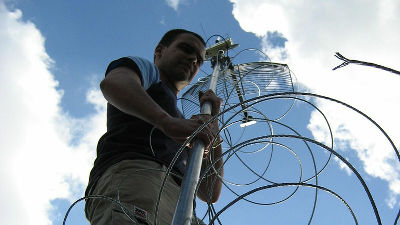What is the achievement of Claude Shannon, the father of information theory?

Information and communication technology is advancing day by day,
How Claude Shannon's Information Theory Invented the Future | Quanta Magazine
https://www.quantamagazine.org/how-claude-shannons-information-theory-invented-the-future-20201222/
Born in Michigan in 1916, Shannon earned a bachelor's degree in mathematics and electrical engineering from the University of Michigan and then published a master's thesis, ' Symbolic Analysis of Transplants and Switching Circuits, ' applying Boolean algebra to circuit design at the Massachusetts Institute of Technology. Announced. This research, which made it possible to design complex circuits based on mathematical theory, is the starting point for ongoing research on circuit design technology.

Next, Shannon focused on research on information and communications. Information and communication is an important technology for humankind, and various information and communication technologies such as homing pigeons, telephones, and televisions have been developed, but these communication systems depend on specific sources of information and physical objects. I did. Shannon conducted research in search of a unified theory that could be used to communicate various types of information, and in 1948
Based on this theory, Shannon developed a method for expressing information with only two values, '0' and '1', and devised the idea of ' entropy (amount of information) ', which expresses the amount of information for each hour using bits. For example, when sending an English sentence of 100 characters per minute, there are 26 letters in the alphabet, so a combination of 26 to the 100th power per minute is possible. Expressing this amount of information using bits, from 26 to the 100th power ≈ 2 to the 470th power, the amount of information when transmitting an English sentence of 100 characters per minute can be expressed as 470 bits. In this way, it is now possible to convert various types of information into bits and handle them.

Engineers at the time thought that efficient information communication methods differed for information such as documents, audio, and video. However, according to the information theory proposed by Shannon, it has become clear that information in any format can be efficiently communicated by converting it into bits before sending and receiving.
Choi said, 'Before Shannon began his research, a huge amount of research on information technology had been carried out, but Shannon put it together in one theory. Each researcher's job is one by one. It's not just about adding branches, it's about cutting branches to make a beautiful tree. '
Related Posts:







